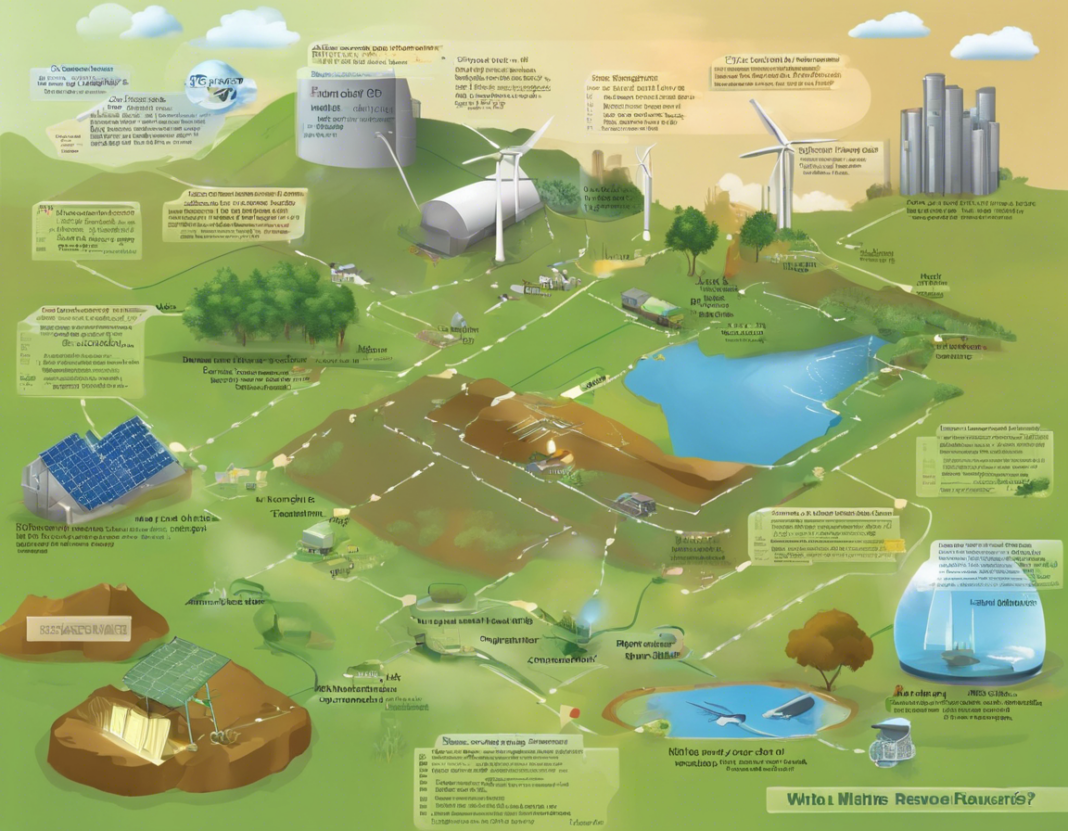In the face of climate change and the depletion of finite resources, the focus has shifted towards utilizing renewable resources for sustainable development. These resources offer a promising solution to meet our energy needs while minimizing environmental impact. But what exactly are renewable resources, and how can we identify them for sustainable use? This article delves into the world of renewable resources, exploring their types, benefits, challenges, and strategies for effective utilization.
Understanding Renewable Resources
Renewable resources are natural resources that can be replenished or regenerated over time. They are sustainable in the sense that they are abundant and have a minimal impact on the environment. Unlike fossil fuels, which are non-renewable and deplete over time, renewable resources can be used continuously without running out. Some common types of renewable resources include:
Solar Energy
Solar energy is harnessed from the sun using photovoltaic cells or solar panels. It is a clean and abundant source of energy that can be used for electricity generation, heating, and cooling.
Wind Energy
Wind energy is generated by harnessing the power of wind through wind turbines. It is a versatile source of clean energy that can be used to generate electricity for homes, businesses, and even entire communities.
Hydropower
Hydropower is derived from the energy of moving water, such as rivers and dams. It is a reliable source of renewable energy that can be used for electricity generation and water supply.
Biomass
Biomass includes organic materials like wood, agricultural residues, and biofuels that can be converted into energy through processes like combustion and fermentation. It is a versatile source of renewable energy that can be used for heating, electricity generation, and transportation.
Geothermal Energy
Geothermal energy is derived from the heat of the Earth’s core. It can be harnessed for electricity generation, heating, and cooling by tapping into hot springs, geysers, and underground reservoirs of steam and hot water.
Benefits of Renewable Resources
The utilization of renewable resources offers a wide range of benefits for both the environment and society:
Environmental Impact
Renewable resources have a lower environmental impact compared to fossil fuels. They produce fewer greenhouse gas emissions, reduce air and water pollution, and help combat climate change.
Energy Security
By diversifying the energy mix with renewable resources, countries can enhance their energy security and reduce their dependence on imported fuels.
Economic Growth
The renewable energy sector is a growing industry that creates jobs, stimulates economic growth, and attracts investments in clean technologies.
Sustainable Development
Renewable resources promote sustainable development by providing a long-term solution to meet energy demands without compromising the needs of future generations.
Challenges of Utilizing Renewable Resources
While renewable resources offer numerous benefits, their utilization is not without challenges:
Intermittency
Some renewable resources, like solar and wind energy, are intermittent sources that depend on weather conditions. This variability can pose challenges for grid stability and energy supply.
Storage
The storage of energy from renewable sources is a significant challenge. Developing cost-effective and efficient energy storage technologies is essential to overcome the issue of intermittency.
Infrastructure
The integration of renewable resources into existing energy infrastructure requires significant investments in grid upgrades, transmission lines, and smart technologies.
Land Use
The large-scale deployment of renewable energy technologies, such as solar farms and wind turbines, can impact land use and ecosystems. Proper planning and siting are crucial to minimize these effects.
Strategies for Identifying Renewable Resources
To effectively identify and utilize renewable resources for sustainability, several strategies can be employed:
Resource Assessment
Conducting resource assessments to evaluate the availability and potential of renewable resources in a specific region. This involves analyzing factors like solar irradiance, wind speed, water flow, and biomass supply.
Technology Selection
Choosing the appropriate technology for harnessing renewable resources based on resource availability, energy demand, and economic feasibility. Different technologies, such as solar panels, wind turbines, and biomass boilers, have varying applications and benefits.
Policy Support
Implementing supportive policies and incentives to promote the adoption of renewable resources. This can include feed-in tariffs, tax credits, renewable portfolio standards, and renewable energy certificates.
Research and Development
Investing in research and development to drive innovation in renewable energy technologies, improve efficiency, reduce costs, and address challenges like intermittency and storage.
Community Engagement
Engaging local communities in the development and deployment of renewable resources to ensure social acceptance, address concerns, and maximize the benefits of clean energy projects.
Frequently Asked Questions (FAQs)
1. What are the main types of renewable resources?
The main types of renewable resources include solar energy, wind energy, hydropower, biomass, and geothermal energy.
2. How do renewable resources differ from non-renewable resources?
Renewable resources can be replenished or regenerated over time, while non-renewable resources are finite and deplete over time.
3. What are the environmental benefits of utilizing renewable resources?
Utilizing renewable resources helps reduce greenhouse gas emissions, air and water pollution, and mitigates climate change.
4. What challenges are associated with the utilization of renewable resources?
Challenges include intermittency, energy storage, infrastructure upgrades, and land use impacts.
5. How can countries promote the adoption of renewable resources?
Countries can promote the adoption of renewable resources through supportive policies, incentives, research and development, and community engagement.
In conclusion, identifying and utilizing renewable resources is crucial for achieving sustainability and combating climate change. By harnessing the power of solar, wind, hydropower, biomass, and geothermal energy, we can transition towards a cleaner, greener future. It requires a concerted effort from governments, businesses, communities, and individuals to accelerate the shift towards renewable energy and ensure a sustainable future for generations to come.












